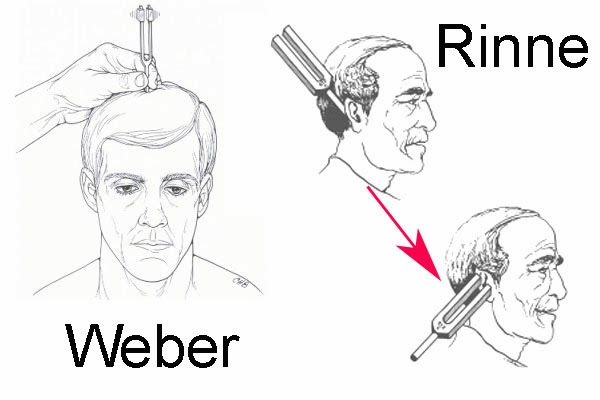


Each included study (n = 24) was assigned a methodological grade.Ī yes response when asking individuals whether they have hearing impairment has a summary likelihood ratio (LR) of 2.5 (95% confidence interval, 1.7-3.6) a no response has an LR of 0.13 (95% CI, 0.09-0.19). One author screened all potential articles and 2 authors independently abstracted data. Medical Subject Headings or keywords used in the search included hearing loss, hearing handicap, hearing tests, tuning fork, deafness, physical examination, sensitivity, specificity, audiometry, tuning fork tests, Rinne, Weber, audioscope, Hearing Handicap Inventory for the Elderly-Screening version, whispered voice test, sensorineural, and conductive. Articles that used unaccepted reference standards or contained insufficient data were excluded. Original studies on the accuracy or precision of screening questions and tests were included. MEDLINE and EMBASE databases (1966 to April 2005) were searched for English-language articles related to screening for hearing impairment. To review the accuracy and precision of bedside clinical maneuvers for diagnosing hearing impairment. Hearing impairment is prevalent among the elderly population but commonly underdiagnosed. The implementation of routine School Ear and Hearing Programs could be beneficial, and should reduce the national burden of ear diseases. While age was a significant factor for OME, it was not a significant factor for OME-associated hearing loss.Įar diseases with associated hearing loss are a significant public health problem among primary school students in the Solomon Islands. Among students with OME in at least one ear, 50% failed audiometry screening in the affected ear. The follow-up attendance rate at the ENT Clinic was 81.1%. The most common ear pathology was Otitis Media with Effusion (OME) (34.2%), followed by impacted wax (22.8%), and Chronic Suppurative Otitis Media (3.1%). Students were referred to the ENT Clinic for medical intervention and/or pure-tone audiometry assessment.Ī total of 342 students (56.6%) did not pass their ear examination, with a significantly higher fail rate among younger students (p < 0.001). School-based ear examinations were performed, including otoscopy and tuning-fork tests. The present study aimed to assess the prevalence of otitis media and associated hearing loss among primary school students in the Solomon Islands.Ī total of 604 primary school students (280 males, 324 females) aged 4-15 years were assessed in two primary schools (government, nongovernment) in the capital city Honiara.


 0 kommentar(er)
0 kommentar(er)
